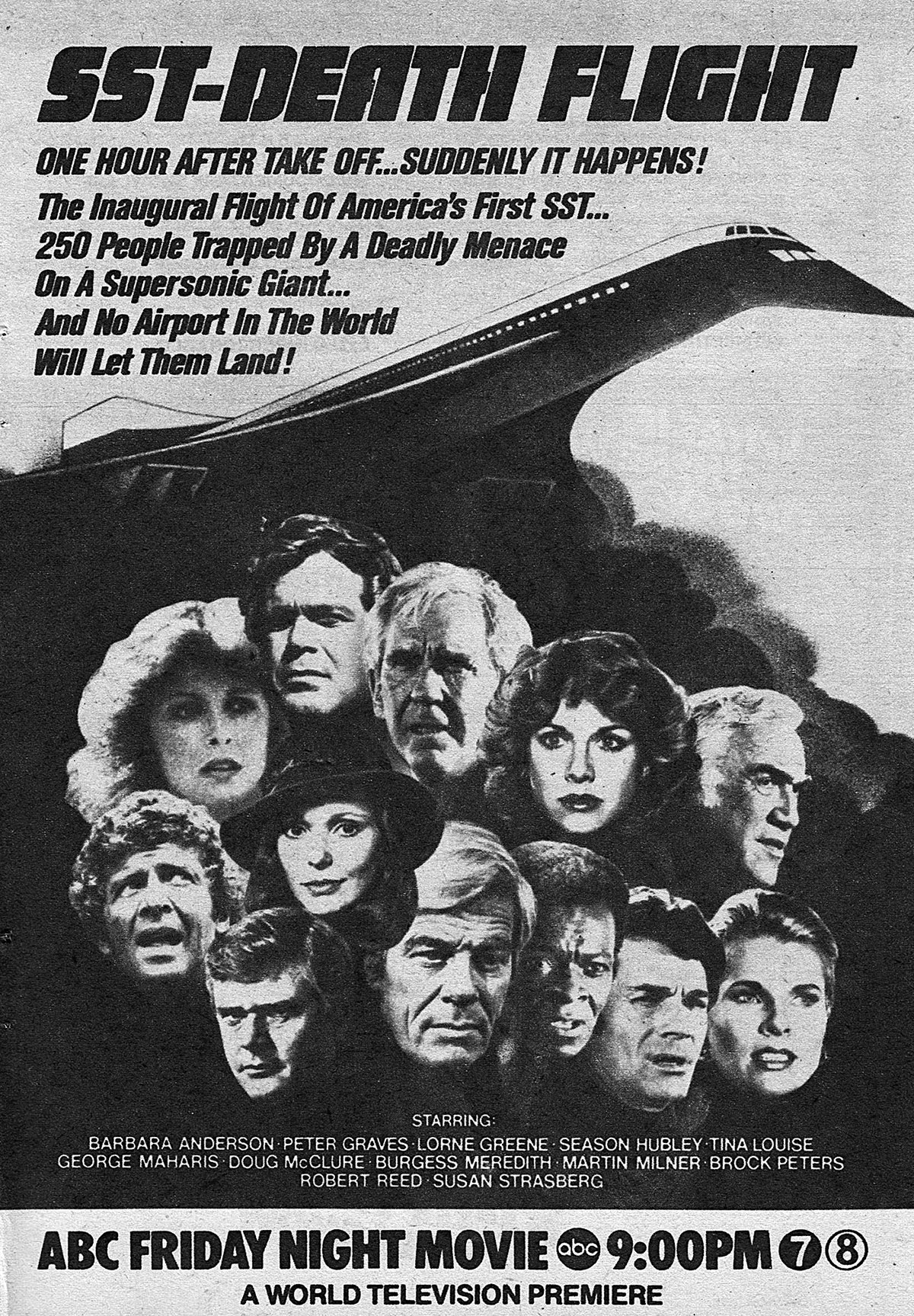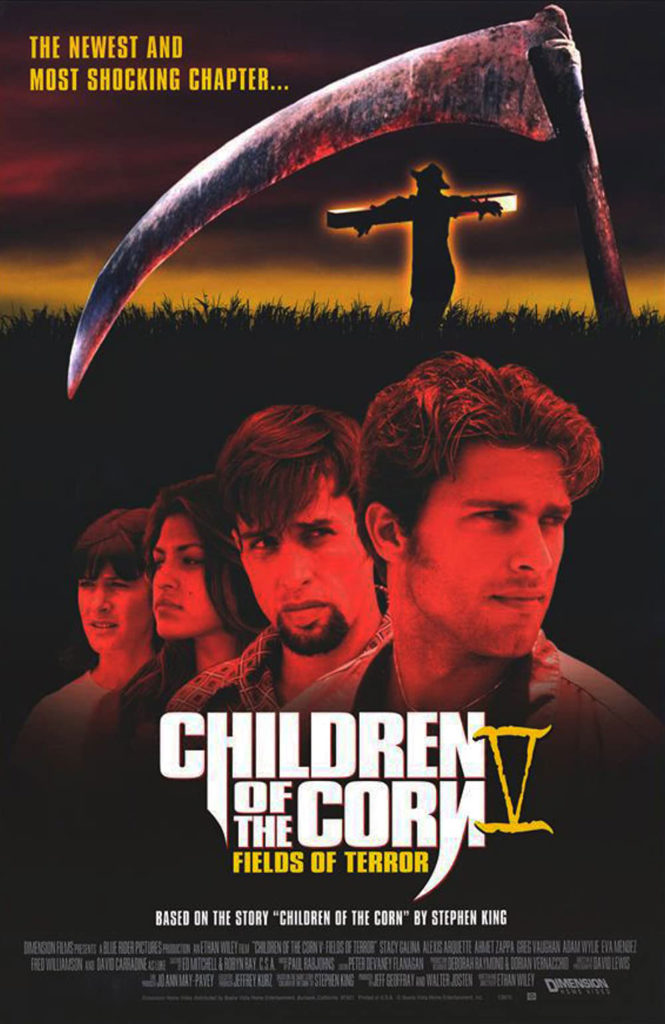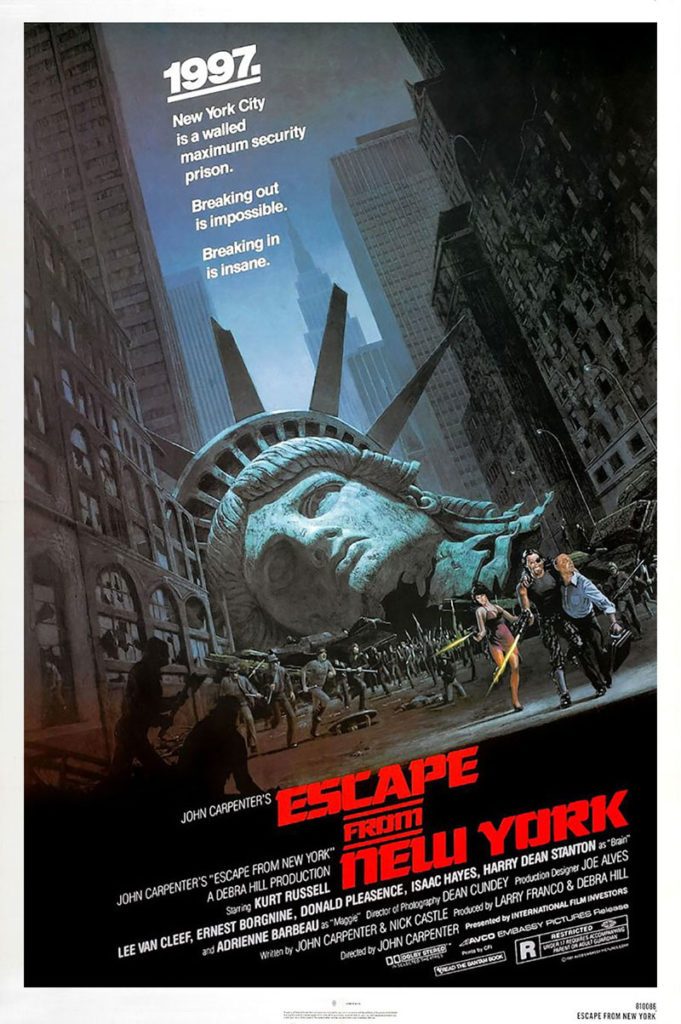 This is exactly the kind of cheese I look for from a television movie in the days before prestige TV. Cheap production values, a bad script, and an ‘all-star’ cast slumming it for an easy paycheck. Also, it helps to rip off a popular cinematic film series — in this case, the Airport franchise.
This is exactly the kind of cheese I look for from a television movie in the days before prestige TV. Cheap production values, a bad script, and an ‘all-star’ cast slumming it for an easy paycheck. Also, it helps to rip off a popular cinematic film series — in this case, the Airport franchise.
It was something of a minor industrial embarrassment for the United States that the only supersonic transport (SST) planes ever in passenger service were run by France and the UK. In this film’s fictional universe, that oversight has been rectified, in the form of the Cutlass Aircraft Maiden 1, an SST whose special effects miniature looks to have been cobbled together from two or three different Revell model kits (the effects in this flick are bad, bad, bad).
After a final shakedown flight, it is time to take passengers onboard, for a trip from New York to Paris that will only take a little over two hours. It’s a big day for Cutlass, as future purchase orders for the plane hinge on its performance during this flight. As such, Cutlass has entrusted the plane to a very serious pilot, in Captain Jim Walsh (a post-Brady Bunch Robert Reed, still rocking the perm). Continue reading “SST: Death Flight, aka Death Flight”

 Like the previous Children of the Corn flick, this fifth entry in the series, subtitled Fields of Terror, features a future star in the cast, in Eva Mendes. But, that’s not all. There’s also a lesser Arquette and a Zappa progeny. The best part is, all this is wrapped up in a package more in tune with the ley lines of shitty cinema — more aware that bad movies survive on spectacle, and less on good intentions.
Like the previous Children of the Corn flick, this fifth entry in the series, subtitled Fields of Terror, features a future star in the cast, in Eva Mendes. But, that’s not all. There’s also a lesser Arquette and a Zappa progeny. The best part is, all this is wrapped up in a package more in tune with the ley lines of shitty cinema — more aware that bad movies survive on spectacle, and less on good intentions. Back before the great wave of gentrification began to hit American cities in the mid-1990s, there was the 1980s, an era when the distressed environment of the cities bottomed out. Long decades of neglect, strained local budgets, and rising crime left our cities veritable war zones. The inner cities were voids of hopelessness, abject poverty, and filth. Even affluent neighborhoods were just dangerous enough to breed well-heeled residents with canny street smarts, always looking over their shoulders for the dark figure hiding behind a tree or in an alley. This kind of palpable fear of urban environments is contagious, and it entered into our lore. We could envision no bright future for the American city because we had seen decay extend its grip for so long. Today’s cities have not fully recovered, and they remain always on the brink, ready to slide back as soon as people’s cares turn elsewhere, but it’s hard to picture just how bad things got unless one were a witness.
Back before the great wave of gentrification began to hit American cities in the mid-1990s, there was the 1980s, an era when the distressed environment of the cities bottomed out. Long decades of neglect, strained local budgets, and rising crime left our cities veritable war zones. The inner cities were voids of hopelessness, abject poverty, and filth. Even affluent neighborhoods were just dangerous enough to breed well-heeled residents with canny street smarts, always looking over their shoulders for the dark figure hiding behind a tree or in an alley. This kind of palpable fear of urban environments is contagious, and it entered into our lore. We could envision no bright future for the American city because we had seen decay extend its grip for so long. Today’s cities have not fully recovered, and they remain always on the brink, ready to slide back as soon as people’s cares turn elsewhere, but it’s hard to picture just how bad things got unless one were a witness.